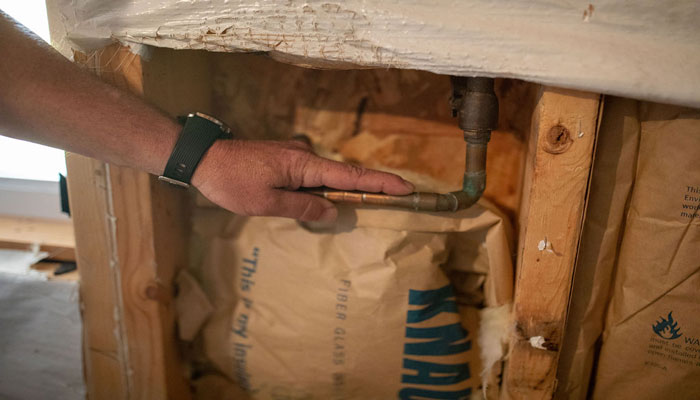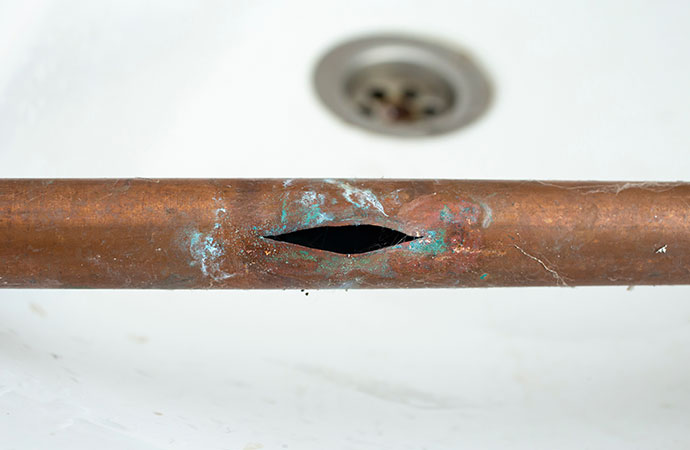Every person has got their own individual way of thinking in relation to What to Know Before Installing a Dishwasher.

A burst pipeline is a significant emergency; you can only stand as you watch water you pay a lot to reunite with the earth. In worse instances, you discover a swimming pool on your kitchen area floor, which is a great journey hazard, particularly if you have children around. If the pipeline that ruptured was in your wall surfaces, bad news: you might need to repaint that whole section.
Exactly how can a tragedy like a burst pipeline be prevented as well as managed? Well, by paying attention to your specialist emergency plumbings and also following these policies.
Just how do I know when my pipelines have ruptured?
Varying water stress
Pipelines do not just burst in a day. You may have observed that your cooking area tap or shower doesn't run quickly when you turn the faucet. It may stop briefly for a couple of seconds and then blast you with more pressure than common.
In other instances, the water might appear regular at first, then decrease in stress after a couple of secs.
Wet walls as well as water discolorations
Prior to a pipe ruptureds, it will certainly leak, the majority of times. If this persistent dripping goes unnoticed, the leakage might graduate into a broad tear in your pipeline. One very easy means to avoid this emergency is to watch out for wet walls advertisement water discolorations. These water discolorations will certainly lead you right to the leak.
Puddles under pipes and sinks
When a pipe ruptureds, the discharge forms a puddle. It may appear that the pool is expanding in dimension, and no matter the number of times you wipe the puddle, in a couple of mins, there's one more one waiting to be cleansed. Frequently, you might not have the ability to map the puddle to any type of noticeable pipes. This is an indication to call a specialist plumber.
Untraceable dripping sounds
Pipeline bursts can happen in one of the most undesirable places, like within concrete, inside wall surfaces, or under sinks. When your house goes silent, you may have the ability to listen to an annoyingly consistent trickling sound. Even after you've checked your shower head and also kitchen area tap, the dripping may proceed.
Precious visitor, the trickling may be coming from a pipeline inside your wall surfaces. There isn't much you can do regarding that, except inform a specialist plumber.
Turn off the Water
When water freezes, it expands in quantity by concerning 9 percent. And also it increases with incredible force: The stress inside pipes may go from 40 extra pounds per square inch to 40,000 psi! No pipeline can hold that much pressure, so it bursts. The break might happen where the ice types, but regularly, it happens where water pressure locates a vulnerable point in the pipe. That might be inches or perhaps feet from the icy area. Locate the water shutoff valve as well as turn off the water to stop more damages. You may also require to turn off the electrical power too, depending upon where the leaks takes place and just how huge it is.
Contaminated water
Lots of people presume a ruptured pipe is a one-way electrical outlet. Rather the contrary. As water flows out of the hole or tear in your plumbing system, pollutants locate their way in.
Your water might be infected from the source, so if you can, examine if your water tank has any kind of troubles. Nevertheless, if your drinking water is provided and detoxified by the local government, you need to call your plumber promptly if you see or smell anything funny in your water.
What do I do when I find a burst pipe?
Your water meter will certainly remain to run even while your water wastes. To lessen your losses, find the major controls as well as transform the supply off. The water mains are an above-ground framework beside your home.
How to Fix & Detect a Leaking Pipe
How Do I Know if a Pipe is Leaking?
Leak detection tests can help you determine if your pipe has a leak. Even if you don’t see an apparent leak, you should still conduct leak detection tests regularly to save water and money—and prevent major damage to your home.
Water meter. It can be helpful to figure out what your usual water meter usage numbers are and then monitor them regularly. To monitor your meter, first, turn off all water faucets in your home. Check the meter and write down the numbers. In a few hours, check the meter again. If the numbers have changed, you have a leak. Water gauge. Use a water gauge to test your water pressure. Your showerhead should produce a certain amount of water pressure based on its model and design. If the pressure is lower than it is supposed to be for that specific showerhead, your home likely has a leak. Puddles. Look inside your bathroom, laundry, and kitchen sink cabinets. Puddles around the cabinets or around toilets, tubs, showers, and washing machines indicate the presence of a leaking pipe. You may also notice loose tiles, peeling or flaking paint, or mold caused by water accumulation. Napkin test. Even if you don’t see any puddles, you may still have a leak. You can test for water leaks in the bathroom, laundry, and kitchen by wiping below-sink connections with a napkin, paper towel, or piece of toilet paper. If it becomes damp, you probably have a leaking pipe under the sink. Discolored walls. Walls that are discolored—usually with brown or yellow stains—or bulging might mean that they have been impacted by water damage caused by a leaking pipe. Smell. A leaky pipe will create sitting water, and over time, that water may develop a musty smell. If your home smells musty, but you can’t locate the source, it may be due to a leak. Steps for Fixing a Leaking Pipe
A leaky drain can be remedied by tightening the pipe base, replacing the drain seal, caulking the rim, and tightening the pipe nut. Similarly, a leaking toilet pipe can be treated by tightening the packing nut. You may also need to replace the valve. A leaky faucet may just need tightening or replacement of the washers. If that doesn’t work, consider replacing your faucet. If your pipe has a hole in it, you may want to use a pipe leak sealer or pipe leak tape. This quick fix for water pipe leaks can also temporarily fix a copper pipe leak. https://www.ahs.com/home-matters/quick-tips/how-to-tell-if-pipes-are-leaking/

We hope you liked our excerpt about What to Know Before Installing a Dishwasher. Thanks a lot for taking time to browse our article post. Sharing is caring. Helping others is fun. I treasure reading our article about What to Know Before Installing a Dishwasher.
Stay calm, contact!